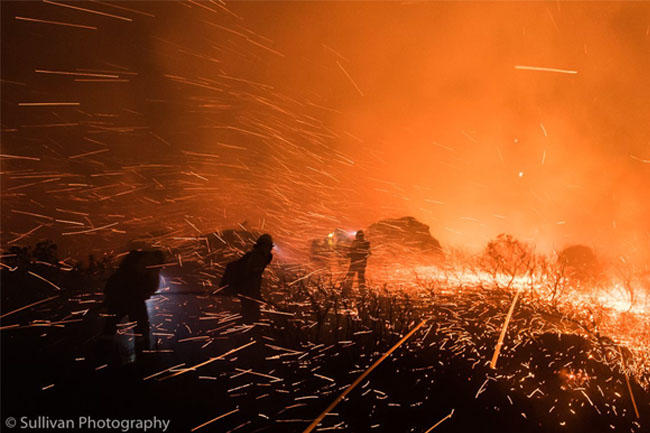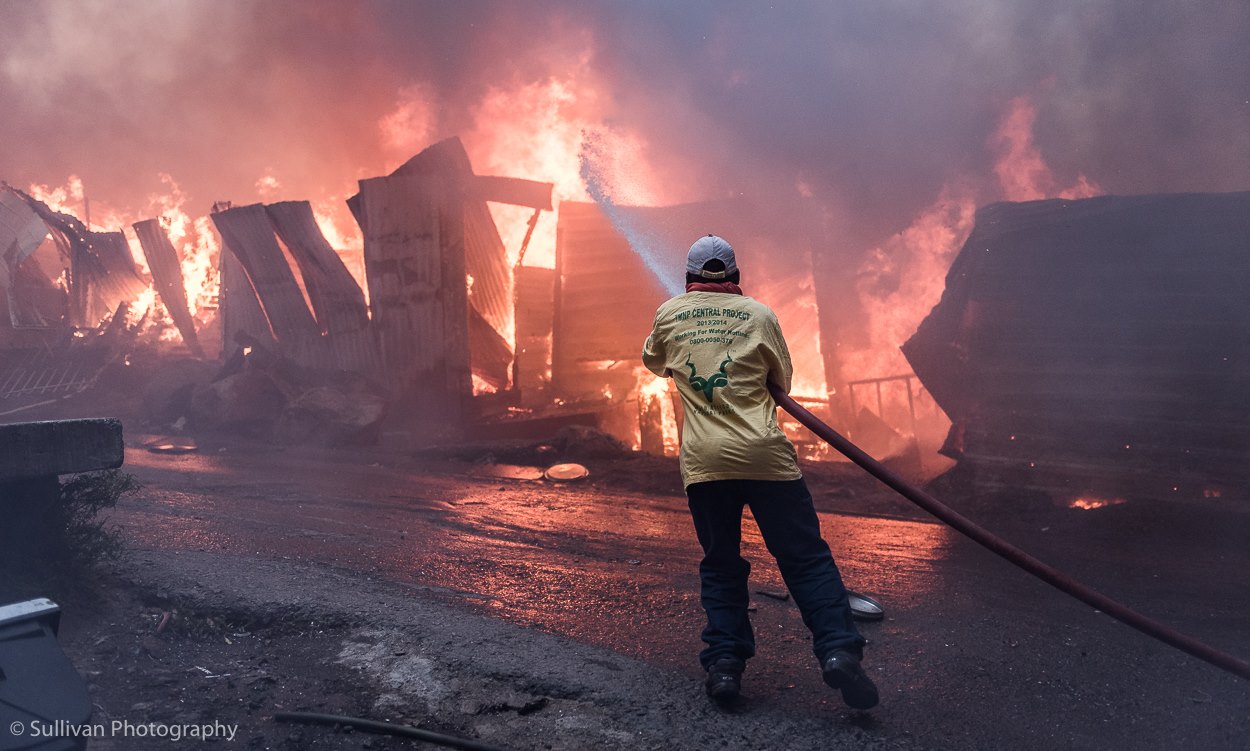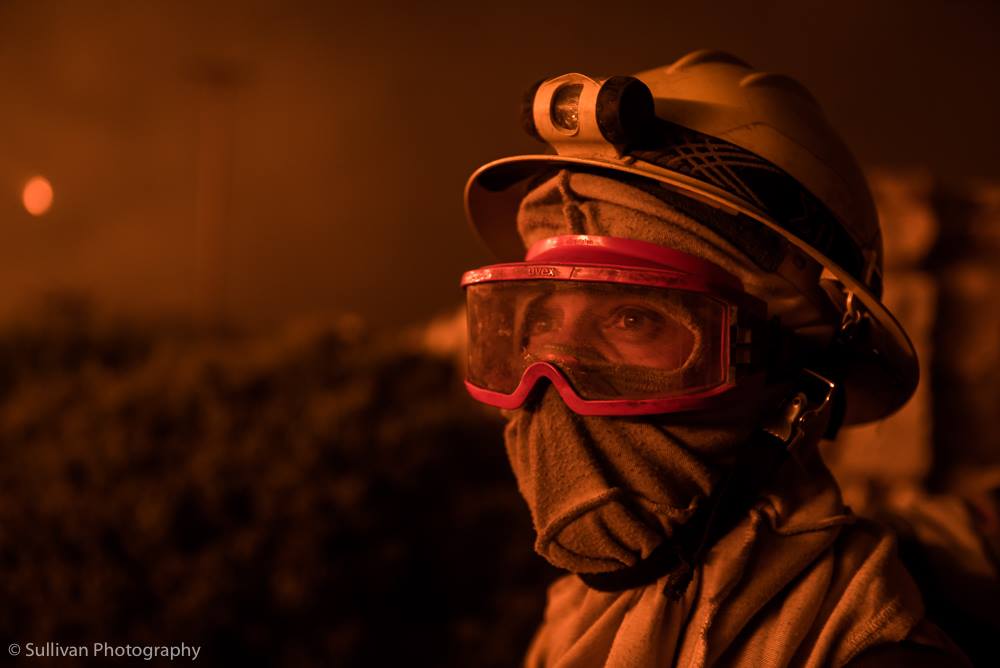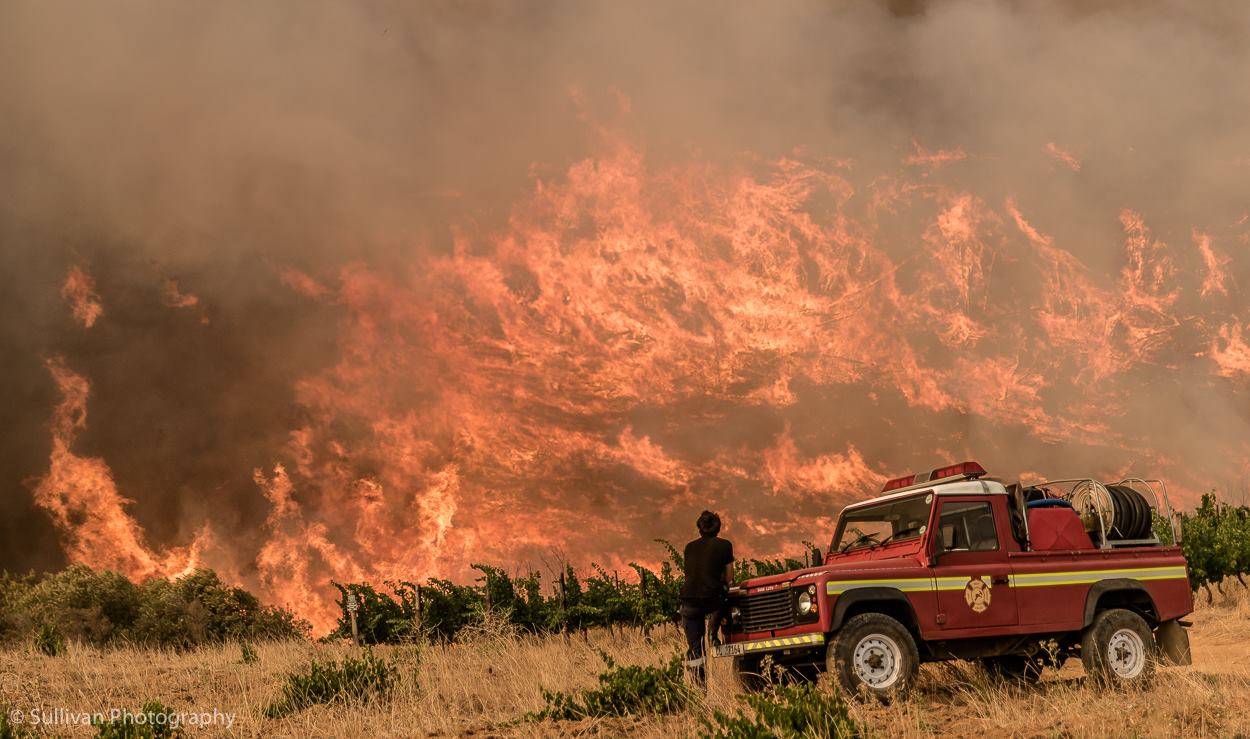Fire season in Cape Town officially starts tomorrow. The dry summer and flammable natural vegetation is prone to fire outbreaks, with fynbos actually requiring fire as part of its germination cycle.
We’ve all come to know ‘fire photographer’ Justin Sullivan through his stark yet captivating, realtime images, he has wowed from the front line. Shoulder-to-shoulder with emergency services, he provides a fascinating – and at times heartbreaking – insight into the ferocity of our fires and the endurance of both firefighters and volunteer services on scene.
We caught up with Justin to learn more about his craft.
Q: What is your background and how did you get into photography?
A: I come from a small town in KZN called Richards Bay. I moved to the Cape to study at Stellenbosch University (BA – Development & Environment), after which I traveled to Europe to work for an App company. My job was to walk around each and every city in Germany taking photos and collect data for parking lots (all on a little samsung S3 Mini).
I bought my first DSLR camera and fell in love immediately. On my return to Cape Town, I took my first few photos at the Cape Town Fires of March 2015. I was in awe of the human emotion attached to fighting these blazes. As I continued to pursue this passion of documenting fires, I realised the immense impact I was having not only on creating awareness around wildfires, but creating groundbreaking content that very few people in the world have access too. Since then, there is nothing else I could imagine myself doing.
Q: You’ve become established as Cape Town’s window into veld fires. Do you have any hairy stories to share with us from your ventures on the front line?
A: I’ve had a couple of hairy moments, most of which occurred during my first few months on the line – probably because inexperience is dangerous. Most of the time things go wrong because you don’t take the necessary safety precautions. I’ve had my car stuck on a 4×4 track trying to escape a fire and had a fire twirl blow right through me. I had to wait out a fire for 45 minutes in a veld because it had completely surrounded us, I had to fast track up a hill as a fire was moving upward and had spotted it behind us, next to us and above us. These are the few that come to mind, but whenever I’m at a big fire, there are always ‘hairy’ moments you witness.
Q: When does fire season typically begin and end?
A: Typically around November to March, but sometimes we see a few fires extend into April.
Q: What inspires you?
A: The drive to create something unique and knowing that my work is having a positive impact. There is nothing more satisfying than seeing my photos being used for education, awareness and wildfire prevention.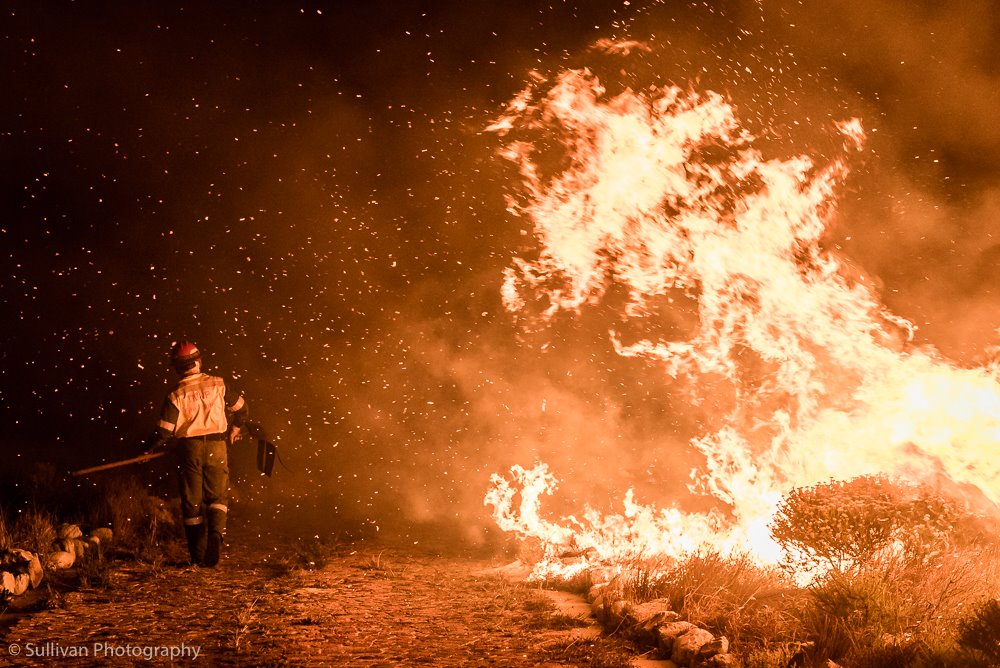
Q: Do you have any advice for people who would like to contribute to the firefighting cause? How can the public help?
A: The best initial action is to be Fire Smart, don’t start fires in unsafe conditions. Be aware of suspicious activity and report fires immediately. Around 90% of fires are started by human interference, so if the public can contribute to reducing this number, that would have the greatest impact. In terms of assisting during a fire – don’t be a fire tourist (I know this is hard as I was once one). Drop off donations at a designated food point and if you have the pocket for it, contribute a small amount to fire awareness and prevention programmes or volunteer groups.
Photography Justin Sullivan




